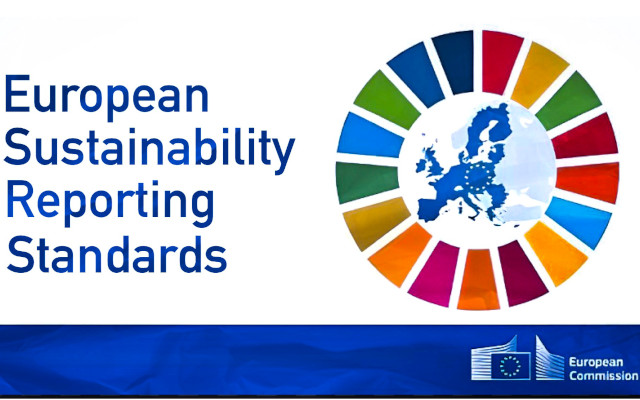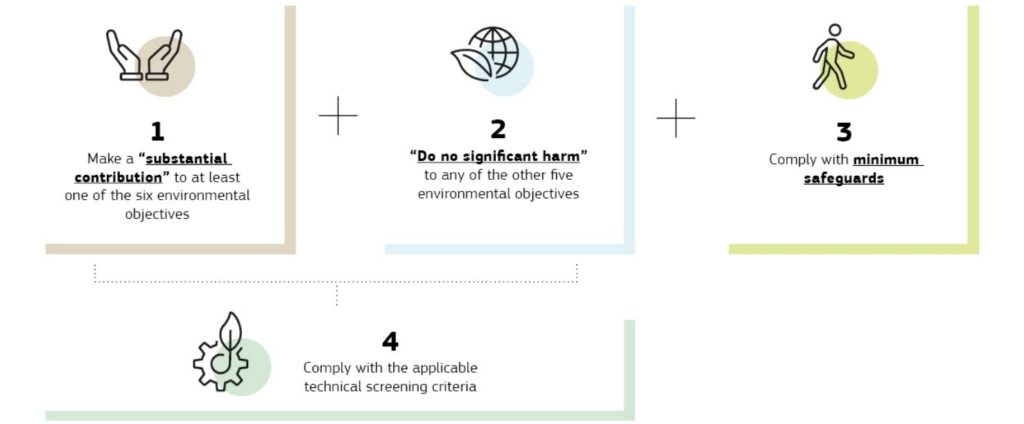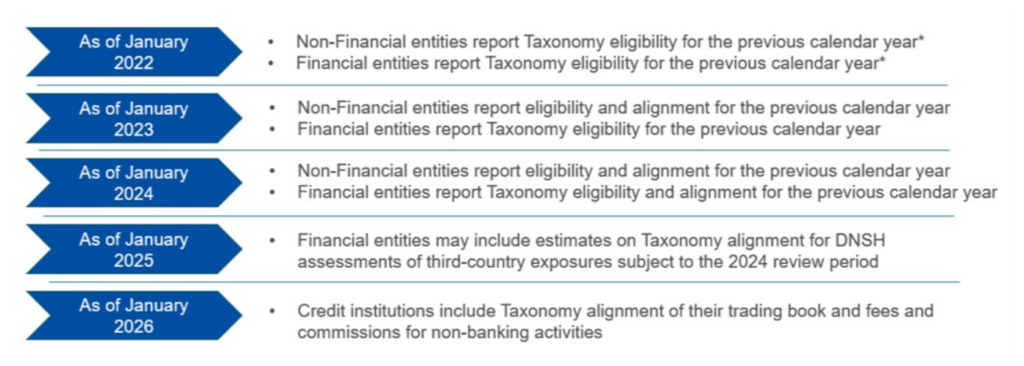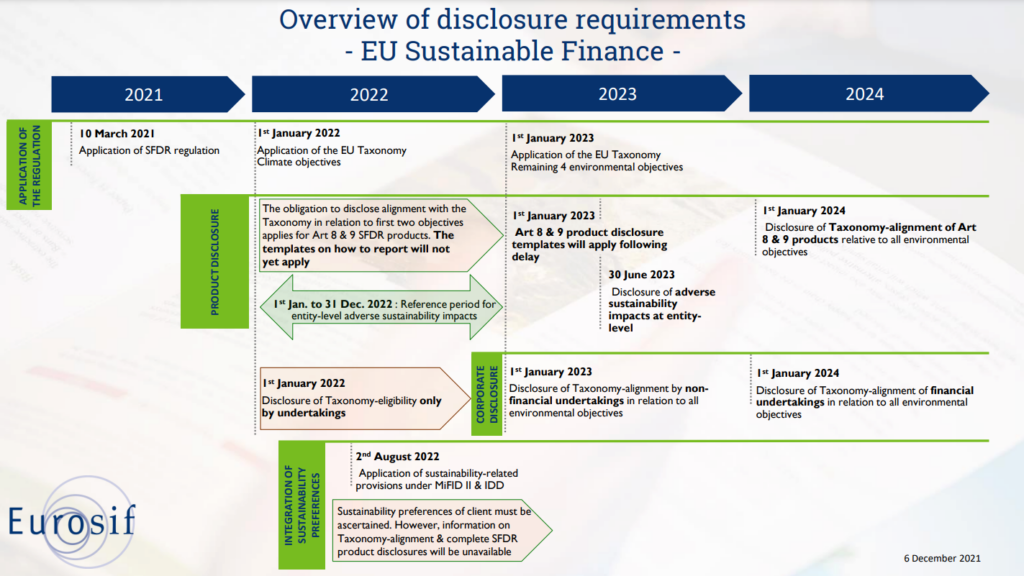Relevant Legislation:

Almost 50,000 companies expected to be impacted by CSRD (three quarters of business in the European Economic Area).
CSRD will apply to:
Reports must cover:
Application of CSRD in 4 stages:

The Taxonomy Regulation established 6 objectives for European companies and some third-countries companies active in Europe to follow:
The Taxonomy Regulation allows to assess the companies’ performances towards the above objectives through 4 criteria:

The Taxonomy Regulation will be implemented in Europe according to the following timeline:



SME and micro-companies are exempt from this.
European Parliament needs to approve the proposal.
Once adopted, Member states have 2 years to transpose it into national law.
Corporate due diligence duty:
Enforcement: